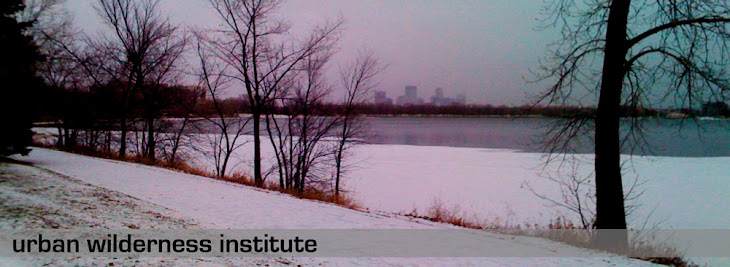To the Editor:
I second your call for President Obama to take all steps within his power to protect roadless areas in our national forests, including a push for permanent protection by Congress (“Who Will Protect the Forests?,” editorial, May 7).
Over two-thirds of America’s national forests have been ravaged by taxpayer-subsidized logging roads and industrial exploitation. The roadless areas we have left include such irreplaceable old growth as the heart of Alaska’s Tongass National Forest, where cathedral spruce and hemlock groves harbor grizzly bears and other wilderness-dependent creatures. Tongass roadless areas deserve full protection.
Roadless forests provide multiple benefits, serving as drinking water sources and habitat, sequestering carbon dioxide and providing recreation. But in some larger sense, the fate of America’s last wild forests is a measure of our respect for America’s wilderness legacy and our concern for those who follow us.
David A. Scott
Columbus, Ohio, May 7, 2009The writer is a member-elect of the board of directors of the Sierra Club.
•
To the Editor:
The national forests are not national parks. The Forest Service was put under the auspices of the Agriculture Department because forests are considered a crop in this country — a renewable resource.
You advocate the Clinton administration’s roadless rule as a means to protect the forests. To the contrary, roads are essential to give access to managers to maintain forest health and to allow for recreational uses. We have learned that letting the forest floor become packed with woody detritus and overgrowth has led to catastrophic fires. Yet you would stop managers from getting equipment into the forests.
In the Allegheny National Forest in my district, almost all of the subsurface mineral rights belong to private property owners. Roads are necessary for the owners to access their property.
What is it about those in the environmental community that makes them believe that only stalwart backpackers should be allowed to enjoy the beauty of national forests?
Glenn Thompson
Member of Congress, 5th Dist., Pa.
Washington, May 7, 2009
Tuesday, May 19, 2009
Visions of Wilderness in US National Forests
Thursday, May 14, 2009
The Ironic Nature Walk
The nature walk occupies an unsavory wedge of land, stuck as it is between a sewage treatment facility and the infamous creek that separates Greenpoint, Brooklyn, and Long Island City, Queens, where decades ago more than 17 million gallons of oil seeped in from underground tanks. Yet, this contradictory nature walk, with its bleak concrete paths, holds truth for our confounding times.The Newtown Creek Alliance was formed in 2002 to advocate for the rehabilitation of Newtown Creek, cleaning up the habitat and building it into a center for community space.
When we think of nature, we imagine ourselves alone, surrounded by untouched beauty, connecting with our collective memories of the world as it was at the dawn of humanity. But “nature” is also defined as a characteristic or state of things, and this alternate meaning carries its own weight.
The City Concealed: Newtown Creek from Thirteen.org on Vimeo.
Following up on the recent ecocities post, we need to start recognizing the value of these marginal landscapes. In large, dense cities, we feel pressed to find new space for recreation and for habitat restoration. Newtown Creek demonstrates (1) that these places exist in our cities, often hidden in the "industrial wilderness," (2) this marginal space can be rehabilitated, and (3) there is a public desire for this type of natural-civic space.Ecocities: Cities Can Save the Earth
Could it be that the root causes of our environmental crises are linked to the biggest things we build - cities?
So argues Richard Register, founder of SF Bay Area's Urban Ecology, author of Ecocities: Building Cities in Balance with Nature, and activist urban planner, writing in a recent Foreign Policy in Focus brief. Our automobile dependence has many direct ecological and social costs, but the most insidious consequence is how cars have reshaped our cities over the last 100 years. Register writes: "Many of us caught in this infrastructure find it extremely difficult to get around in anything but the car. The distances are just too great for bicycles, the densities just too low to allow efficient, affordable transit."
The challenges are significant, but Register has reason for optimism:
We can change our cities. In fact, our cities have already changed. Portland has frequent transit that’s free in the downtown area, and has designated a “urban growth boundary” to limit the expansion of the city’s urban area and preserve nearby farmland and other open spaces and a thriving and very dense new residential and “mixed-use” center in the Pearl District. The rooftops in Tel Aviv, Israel and dozens of Chinese cities sparkle with solar hot-water panels. Copenhagen’s pedestrian street, the Støget, has been growing steadily since 1962 and now stretches more than two miles.
But we can do more, much more, to redesign our cities for pedestrians and bicyclists, taking up very small areas of land in more compact development. Taller buildings with rooftop gardens and solar greenhouses can be linked by pedestrian connections between rooftops and terraces above ground level, making city centers intimately accessible to people on foot. As we add population and ecological architecture in pedestrian/transit centers, we can gradually eliminate the unsustainable suburbs.
We'll need to start rebuilding our cities to incorporate Register's ecocity concepts - pedestrian/transit-oriented infrastructure, replacing sprawl development with nature/agriculture, and integrating renewable energy systems - if we are to meet the triple threat of climate change, biodiversity loss, and dwindling (cheap) fossil fuels. Rethinking our cities as places that both humans and non-human nature can call home is a place to start; cities that are friendly for pedestrians and cyclists are likely to welcome trees, restored streams, and urban wildlife as well.
Read the whole article at Foreign Policy in Focus, and learn more about the ecocity at Ecocity Builders.
